
Team Toad: Polar Vortex 4
Home |
News |
Team |
Robots >
Polar Vortex >
Polar Vortex 4 |
Events |
Research |
Stickers |
Video |
Links |
Contact
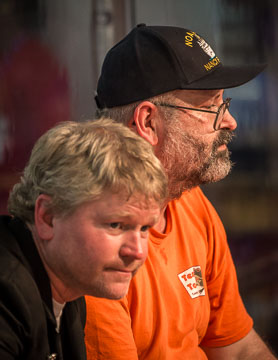
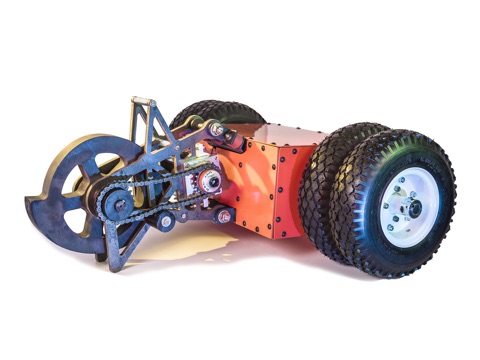
Polar Vortex went 1-2 at RoboGames 2017, scoring one knockout.
New Weapon
For 2017 we set the goal of making a big spinner using a single-tooth disc.
Our inspiration was the "Snail Drum" design of Touro Maximus (see the paper
Drum Shape Design and Optimization Using Genetic Algorithms by
JL Ramos and
Marco Meggiolaro, 2012).
The Touro drum design was optimized by 10,000 iterations of a genetic algorithm.
Having done my area qualification on genetic algorithms for my master's degree, I wanted to know
if I could design a single-tooth disc using less computing power.
Bi-directional tooth
The first design was a single bi-directional tooth, similar to that from
Blizzard. But Blizzard had two teeth 180 degrees apart, so they could be
any shape and the disc would stay balanced.
By starting with the intersection of two offset circles, one can make a disc with a single tooth.
You can divide the resulting shape into six different geometric shapes, each with a simple algebraic
formula for its center of gravity. By putting these into a spreadsheet, you can define the disc by
six parameters. Since the shape is symmetric about the X axis, you only need to adjust these
parameters to center the mass on the Y axis. You can use simple "bisection search" to find
a solution with a center of gravity at <0,0>. This search can be done by hand and the error
can be reduced to less than one part in a million in about two dozen iterations.
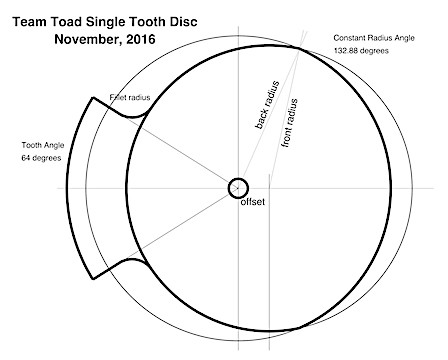
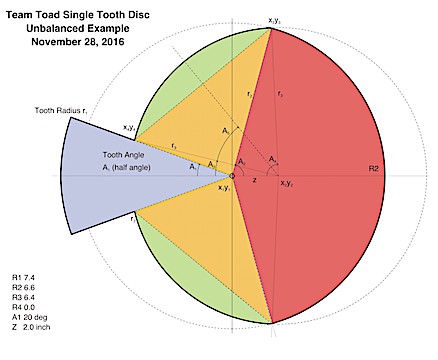
To demonstrate the proof of concept, we sent the file off to
Big Blue Saw to be water jet cut from a plate of half-inch
6061 aluminum. For a real weapon you'd want to use a hard steel, and a thicker plate, but for testing
balance a piece of aluminum is more economical to start with.
The math gives us an outer profile that is balanced around the center, but to make a real weapon
you must add a keyed bore, in this case for a 2 inch shaft with a 1/2 inch keyway. We also added
"e;lightening holes"e; to reduce the weight near the center. The effectiveness of a kinetic
spinner depends on its angular moment, not just its weight, so the more mass located farther from the
center, the more rotational energy the disc can store. As long as the holes are symmetric around
the bore, they do not affect the cener of gravity.
For purely stylistic team tradition we used five-way symmetry with holes every 72 degrees.

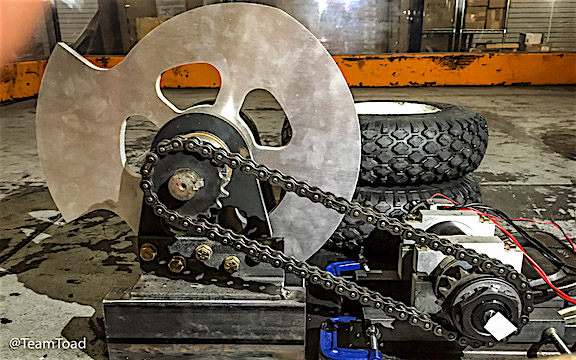
The photo on the left shows the actual drawing file sent off to the water jet cutter,
and the right shows the test rig we used to spin the aluminum disc to 6,000 rpm.
CAD functions
You can actually make a spinning weapon out of almost any shape simply by drawing it
and using a center-of-gravity function in most modern CAD software to locate
the exact location to center the bore. Part of the point of this exercise was to do
it by hand with math, because (1) I have a degree in math, and (2) I do not have any
modern CAD software.
One-directional single-tooth
You can make a single-tooth disc even more efficient in storing and transferring energy to the opponent
by making it spin in a single direction. This is the theory behind the "Snail Drum" of Touro.
The method chosen was to simulate an Aristotelian spiral using four separate quarter-ellipses. Including
the fillet region, there are only six parameters to specify the shape, including the small red area
for the fillet.
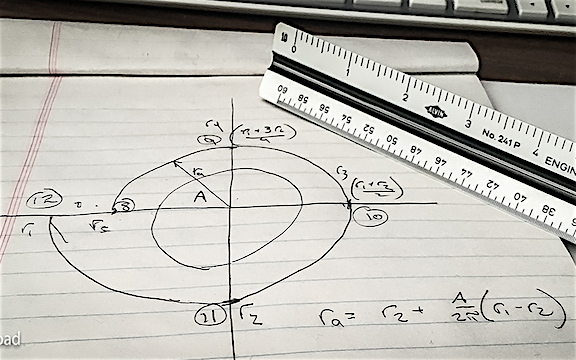
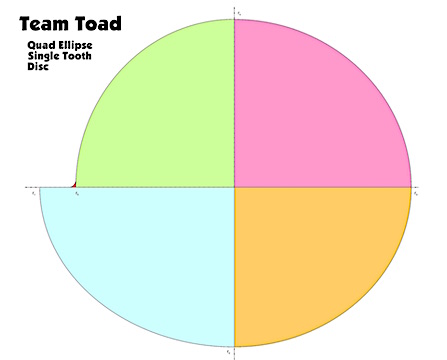
Since the shape is not symmetric about either axis, you must use "hill climbing search"
to optimize the center error. Basically you can alternate reducing one axis to zero using
bisection search, then optimize the other axis. Again the process approaches one part in a million
after only two dozen calculations on the spread sheet, and can be done in few minutes on a
laptop computer.
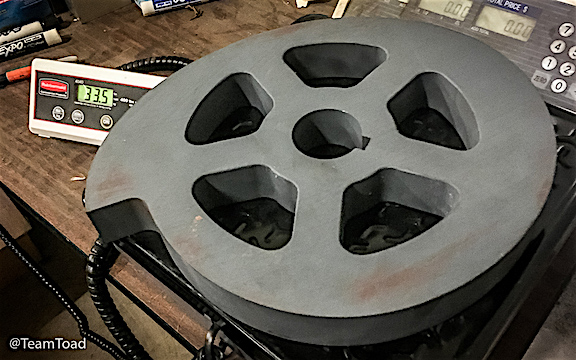
Confident after our first test with the aluminum disc, we ordered our production weapon discs out of
S7 tool steel, heat treated to Rockwell C50 hardness. We ordered two discs each of
three thicknesses, 1.5 inch, 1.75 inch, and 2 inches thick. That gave use options to choose based
on the actual weight of the robot, since the discs had to be ordered two months before the robobt
itself could be built and weighed.
Results
Polar Vortex score a knock out against Mega Melvin, but lost to MegaByte and Touro Maximus.
The disc design proved effective, but improvements were needed in the bearing mount and
weapon motor mounting.
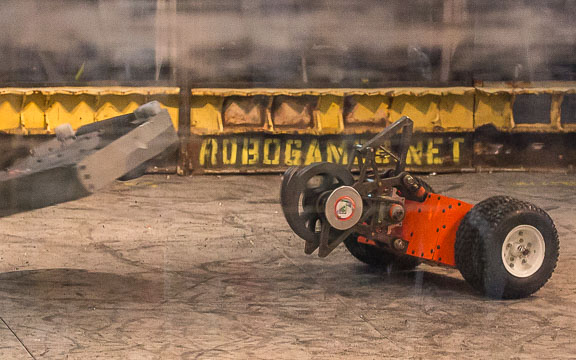
Home |
News |
Team |
Robots |
Events |
Research |
Stickers |
Video |
Links |
Contact












